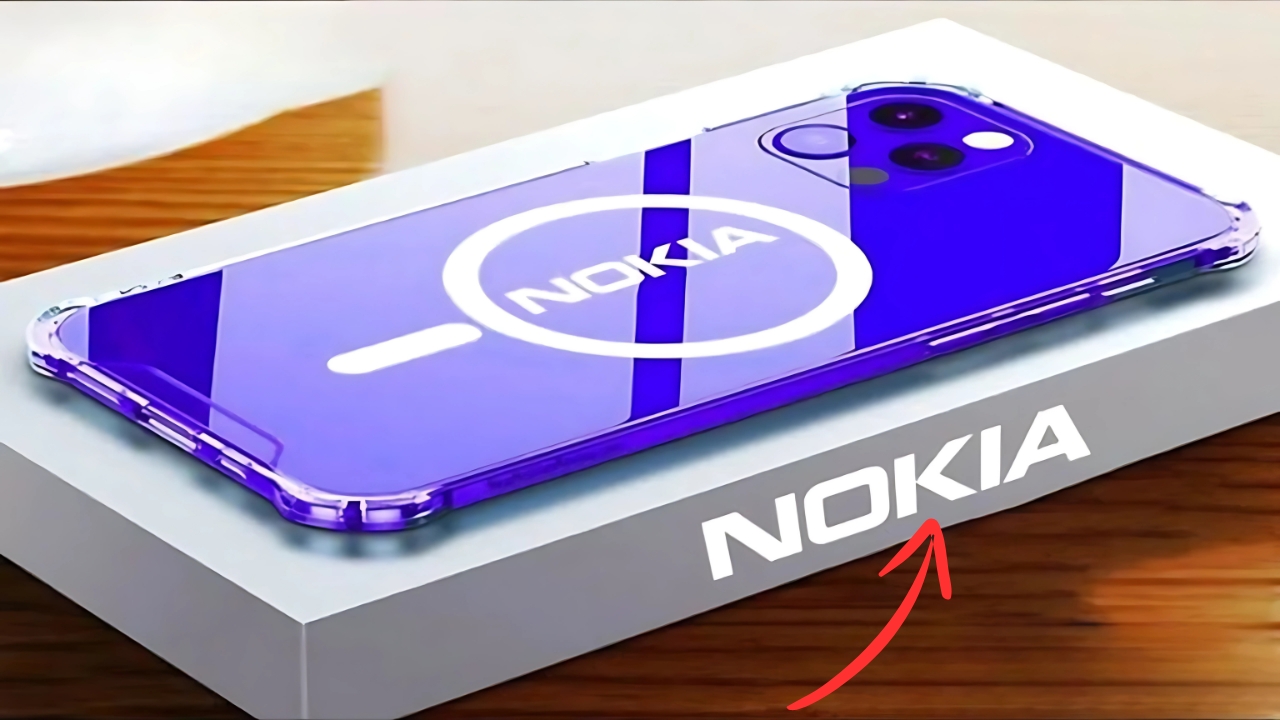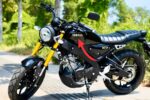Nokia X600 5G: Few brand names in mobile technology carry the historical weight of Nokia. Once the undisputed global leader, the Finnish company’s journey through the smartphone revolution has been tumultuous, marked by missteps, reinventions, and persistent attempts to recapture former glory.
The Nokia X600 5G represents the latest chapter in this ongoing narrative – a mid-range device that attempts to balance nostalgia with contemporary expectations.
After using it as my primary device for nearly a month, I’ve formed a nuanced perspective on where this phone succeeds and where challenges remain.
Nokia X600 5G: Market Context: Understanding Nokia’s Position
To properly evaluate the X600 5G, one must first understand the complex brand landscape it inhabits.
Now manufactured under license by HMD Global, modern Nokia phones attempt to leverage brand recognition while competing in a crowded marketplace dominated by aggressive Chinese manufacturers, Samsung’s comprehensive lineup, and Apple’s premium ecosystem.
The X600 5G, positioned in the increasingly competitive mid-range segment (approximately ₹24,999/$300), targets consumers who value brand heritage, clean software, and European design sensibilities over the raw specification battles that characterize much of this price bracket.
This positioning creates distinct expectations that differ somewhat from those applied to value-focused brands.
Design Philosophy: Nordic Minimalism
The X600 5G embraces Nokia’s longstanding design language – a restrained Nordic aesthetic that prioritizes functionality and durability over flashy elements.
The “Midnight Blue” variant I tested features a matte-finished composite back that resists fingerprints remarkably well while providing reassuring grip.
Unlike many competitors that simulate premium materials, Nokia embraces the inherent properties of polycarbonate, creating a honest, utilitarian feel that’s increasingly rare in modern smartphones.
At 8.9mm thick and weighing 196 grams, the device doesn’t attempt to win thickness or weight competitions. Instead, this slight heft contributes to a substantive feel that many users will find reassuring.
The frame incorporates subtle texture along the sides, improving grip during one-handed use.
While not officially rated for drop protection, the solid construction inspires confidence that would be lacking in more delicate designs.
The front design maintains slim, symmetrical bezels around the 6.56-inch display, with a small dewdrop notch housing the front camera.
This approach, while not as contemporary as punch-hole implementations, creates a balanced, undisturbed viewing area.
The slight chin bears the Nokia wordmark – a small reminder of brand heritage without appearing excessive.
Physical controls deserve specific mention for their tactile quality. The power button provides satisfying feedback with perfect resistance, while the dedicated Google Assistant button (which can be remapped) offers useful functionality without prone positioning that might cause accidental activation.
The inclusion of a 3.5mm headphone jack reflects Nokia’s practical approach, acknowledging that many users in target markets still prefer wired audio options.
Display Experience: Pragmatic Choices
The 6.56-inch IPS LCD represents a conscious decision to prioritize other aspects over OLED technology at this price point.
Rather than compromising across all specifications, Nokia has selected a high-quality LCD panel that delivers 90Hz refresh rate, FHD+ resolution (2400 × 1080), and impressive color accuracy in “Natural” mode.
Viewing angles remain strong for LCD technology, though can’t match OLED alternatives.
Maximum brightness reaches approximately 650 nits in high brightness mode, sufficient for most outdoor scenarios except direct sunlight.
The adaptive brightness implementation deserves praise for its natural transitions between intensity levels – a small detail that enhances everyday usability.
The display also incorporates Panda Glass protection, which has demonstrated reasonable scratch resistance throughout my testing period.
The decision to implement a 90Hz rather than 120Hz panel proves judicious, offering noticeably smoother scrolling than 60Hz displays while balancing battery impact.
The implementation includes intelligent switching between refresh rates based on content and interaction, further optimizing power consumption.
Performance Dynamics: Balanced Capabilities
Powered by MediaTek’s Dimensity 6300 platform, the X600 5G occupies a sensible position in the current silicon hierarchy.
This 6nm chipset delivers efficient performance for daily tasks while providing adequate capability for occasional gaming at moderate settings.
The 6GB/128GB configuration in my review unit offered sufficient multitasking headroom for typical usage patterns, though the optional 8GB variant would benefit heavier users.
In practical terms, the device handles messaging, social media, video consumption, and light productivity without hesitation.
Apps launch with minimal delay, system navigation maintains fluidity, and switching between recent applications occurs without significant reloading when staying within reasonable multitasking boundaries.
The UFS 2.2 storage provides acceptable data access speeds that complement the processor’s capabilities.
Gaming performance reflects the device’s mid-range positioning. Titles like “PUBG Mobile” and “Call of Duty Mobile” run adequately at medium settings with reasonable frame rates, though more demanding games require additional graphical compromises to maintain playability.
Thermal management impresses during extended sessions, with minimal warmth even during sustained workloads – a testament to efficient hardware integration.
Camera System: Focused Approach
The camera array combines a 50MP primary sensor with an 8MP ultrawide and 2MP macro lens.
Rather than engaging in the megapixel race or adding depth sensors of questionable utility, Nokia has focused on optimizing the primary shooting experience – a pragmatic approach that generally pays dividends in actual use.
In favorable lighting, the main camera captures detailed images with natural color reproduction that avoids the oversaturation common in this segment.
Dynamic range proves surprisingly capable, retaining both highlight and shadow detail in challenging scenes.
The ultrawide, while not matching the main sensor’s capabilities, maintains reasonable consistency in color science – an area where even premium devices sometimes falter.
Low-light photography reveals thoughtful computational approaches. Night mode produces detailed images without excessive noise reduction that obliterates texture.
The resulting photos won’t challenge flagship devices but remain entirely usable for social sharing and personal documentation – the primary use cases for most consumers.
Video capabilities include stable 4K recording at 30fps from the main camera, with effective electronic image stabilization that produces acceptable results during moderate movement.
The inclusion of proper stereo audio recording demonstrates attention to detail often overlooked in this segment.
ZEISS optics branding, while primarily marketing, does correspond with better-than-expected lens quality.
Distortion, chromatic aberration, and edge softness – common issues in mid-range devices – remain well-controlled throughout the focal range.
Battery Experience: Dependable Endurance
The 5,000mAh battery consistently delivers full-day endurance even under heavy usage patterns, with more moderate users easily extending into a second day.
This generous capacity addresses range anxiety without requiring extreme charging solutions, striking a balance that enhances overall user experience.
The included 33W fast charger replenishes approximately 60% capacity in 30 minutes, with a full charge requiring just under 75 minutes.
While not matching the extreme speeds of some competitors, this charging rate provides meaningful convenience during daily use without potentially compromising long-term battery health – another example of Nokia’s balanced approach to specifications.
Battery longevity features demonstrate forward-thinking design, with intelligent charging that adapts to usage patterns and reduces battery stress during overnight charging.
The promise of maintaining at least 80% battery capacity after 800 charge cycles speaks to confidence in component quality and optimization.
Software Experience: The Pure Android Advantage
Perhaps the X600 5G’s most compelling differentiation comes through its software approach. Running near-stock Android 14, the device offers a clean, intuitive experience largely free from bloatware, duplicate applications, or intrusive advertising.
This contrasts sharply with many competitors that layer heavy customizations and third-party integrations atop Android.
Nokia’s commitment to three years of security updates and two major Android version upgrades enhances the device’s longevity and value proposition.
Monthly security patches have arrived promptly during my testing period, suggesting this commitment extends beyond marketing promises.
The minimal customizations focus on enhancing rather than reimagining the Android experience.
Features like adaptive battery optimization, simplified one-handed mode, and thoughtful gesture implementations provide meaningful utility without overwhelming users with complexity or redundancy.
Nokia X600 5G: Considered Compromise
The Nokia X600 5G ultimately succeeds through clear understanding of its target audience and judicious feature prioritization.
Rather than attempting to win specification comparisons across all categories, it delivers a balanced experience that emphasizes software longevity, build quality, display performance, and battery reliability – elements that impact satisfaction throughout the ownership cycle.
For consumers who value a cleaner Android experience, timely updates, and European design sensibilities, the X600 5G offers a compelling alternative to Chinese-manufactured competitors that often prioritize raw specifications.
In resisting the trend toward feature overcrowding, Nokia has created a device that reflects the brand’s historical focus on reliability and user experience over marketing-driven excess.
In an increasingly homogenized smartphone landscape, the X600 5G demonstrates that specification sheets tell only part of the story.
The intangible aspects – software optimization, update commitment, and coherent design philosophy – contribute significantly to daily satisfaction in ways that benchmark numbers cannot capture.





